The grass isn’t always greener on the other side of the causeway. But hey, the streaming options? Way better.
Oh South Florida, why dost thou forsake me?
Setting up a home network for hi-res music and 4K movies should be like building a media autobahn—fast, reliable, ready for whatever you throw at it. Instead, mine’s more like a backwoods trail that barely supports a wheelbarrow, let alone buffering-free streaming or kids raging over Fortnite lag.
Between Andor looking like it’s stuck in VHS quality, DSD files buffering at the worst sax solo, and NHL Playoffs freezing mid-Ovechkin rocket shot, I’m about ready to throw the router out the window. My aging Wi-Fi router, once the pride of my Best Buy cart, now wheezes along like a rotary phone trying to get on a Zoom call. It’s about as relevant as NFTs or the metaverse—two overhyped tech cults still waiting for the revolution that never showed up.
Moving to the Sunshine State didn’t fix the issue. Sure, sunshine’s here — along with HOA fees that would make Mon Mothma’s Senate blush, storm insurance priced like I’m defending the Death Star, and traffic that’s somehow worse than Coruscant thanks to every NY and NJ driver fleeing their homes.
But the real kicker? Internet providers thinner than the Toronto Maple Leafs’ playoff resume. Living offshore, surrounded by water and a scant list of ISPs, means streaming hi-res audio is a pipe dream. Mostly I’m just praying the signal sticks when the wind blows.
I briefly flirted with Starlink — until the internet dropped during a Bosch 4K stream and the kids started yelling about Squid Game lag. Sure, it’s a decent emergency backup, especially when Godzilla-level storms hit and the cables go dark, but it’s no miracle worker for daily streaming bliss.
If you’re in the city, you might scoff at these struggles. But rural life or no, even tech editors armed with the latest gear battle spotty coverage, wallet-busting bundles, and contracts longer than the credits on a Marvel movie.

And about The Cabin — yeah, that update’s coming. Just not where I imagined. Life throws punches, and some land harder than others. The 880-square-foot cabin is still on track, perched on a windswept hill above the rocks on the…Nova Scotia coast. The North Atlantic is right there—loud, cold, and honest. Not oceanfront Jersey. Something older. Something with teeth.
Greetings from the home of Crosby—and the best fish and chips you’ll ever eat with salt in the air and blood in your mouth.
More on this in August.
Fiber vs. Cable? Let’s Talk About the Right Kind of Fiber in Your Diet

Everyone down here in Florida keeps telling me how important fiber is for staying regular — and while most of them mean the kind that comes in a powder and gets stirred into orange juice at 7 a.m. sharp, I’m talking about fiber optic. You know, the kind that keeps Andor from looking like a bootleg DVD on your 85″ Hisense.
If you’ve got fiber internet available in your neighborhood, skipping it is like choosing a horse-drawn cart over a bullet train. Or worse — like thinking a landline, AOL, and a fax number still count as a “bundle.” Fiber gives you screaming fast downloads, actual upload speeds, and reliability that cable can’t touch.
Here on the Treasure Coast, fiber isn’t always an option. But if it is, and your HOA hasn’t blocked it in favor of Bob’s Bargain Cable & Bait Co., jump on it. Symmetrical gigabit speeds mean your Kaleidescape server stays fed, the kids don’t scream and your Zoom calls don’t freeze mid-eye roll — even while your lady is streaming Ferris Bueller in 4K from the backyard movie setup that cost less than your neighbor’s weekly golf tab.
Of course, some of the locals are still suspicious of “the cloud,” and yes, my northern sarcasm has made me wildly “popular” at Publix — especially when I dare complain about the lack of decent Indian or Vietnamese food (I did find two, so there’s hope). But let’s be honest: if I’m going to be stuck paying hurricane premiums and tolls to get to Target, I’m sure as hell not settling for cable internet powered by a hamster wheel.
Fiber: good for your gut, great for your stream.
And Before We Get Rolling… Can We Just Get One Thing Out of the Way?

Let’s talk about the most laughable scam in high-end audio since CD demagnetizers and $800 fuse boxes blessed by monks in the Alps: audiophile Ethernet cables.
Yes, some folks genuinely believe their streaming will “sound better” with an Ethernet cable that costs more than a solid used Honda Civic. They’ll throw around words like “jitter reduction,” “noise rejection,” and “clock timing accuracy” as if their DAC is somehow decoding Beethoven’s Ninth by way of The Matrix. Spoiler alert: it’s just ones and zeroes. Your $21 Monoprice CAT6A Ethernet Patch Cable will do the job just as well as that $1,200 “cryogenically treated, oxygen-free, NASA-certified” monstrosity.
But hey, if dropping a grand on a cable makes you feel better while streaming TIDAL in your overpriced recliner, knock yourself out. Just don’t come to me for sympathy when the only real difference is the burning sensation in your checking account and a faint smell of smug wafting through your overpriced diffuser.
Here’s a radical idea: maybe put that $1,200 toward something that actually brings joy — like a proper braai grill, a 4K OLED that doesn’t make Dune look like it was shot on a Game Boy, or even twenty Buck Mason heavyweight tees so you can at least look good while your network functions the exact same way it did before.
Better yet, invest it in your kid’s college fund, because trust me — when you finally peace out and leave behind a tangle of snake oil Ethernet spaghetti and a Roon subscription nobody knows how to cancel, someone’s going to need a backup plan that doesn’t involve hawking audiophile cables on Facebook Marketplace for fifty bucks and ghosting the buyer.
And if you think I’m being harsh, remember — I live in a place where 4 p.m. is considered a “late” dinner reservation, and Boca MILFs size me up at Ben’s Deli, eyes darting from my ring finger to the shadow of one, as if trying to calculate alimony potential in real-time. This isn’t a myth. It’s a sport.
So yeah. Keep your fancy Ethernet. I’ll keep my common sense.
The Basics of Home Networking: Get Your Wi-Fi Together
Before you start blaming your internet provider, the router, or the ghost of your dial-up past, let’s get real: most streaming meltdowns start at home. And yes, your router might be the problem — especially if it still thinks “4K” is a retirement age.
Your router is the command center — it connects to the internet and distributes data to your devices. But if it’s older than your last Game of Thrones rage-quit, it’s time to upgrade.
At minimum, you want Wi-Fi 6. It’s faster, handles more devices at once, and doesn’t collapse into a sobbing mess when your TV, PlayStation, and three iPads all start streaming The Mandalorian in 4K.
Wait… What Is Wi-Fi 6 and Shouldn’t I Just Get Wi-Fi 7 Instead?
Yes, Wi-Fi 7 is out there flexing with its “insane bandwidth” and “ultra-low latency” — and if you’ve got a mansion, a backyard movie screen, and three NAS drives filled with DSD files, go for it. But for the rest of us, Wi-Fi 6E still has more than enough muscle… at least until your smart fridge decides it needs to binge-watch Adolescence too–which happened last Tuesday.
Wi-Fi 6 (aka 802.11ax) is the wireless standard that finally realized homes are now filled with more connected devices than your average Best Buy. It’s faster, more efficient, and doesn’t crumble when your thermostat, doorbell, three tablets, and smart litter box all demand bandwidth at once.
If your devices support Wi-Fi 6 or 6E (which adds the 6GHz band for even less interference and more speed), you’ll get lower latency and smoother everything. But don’t panic — Wi-Fi 6 still plays nice with your old Wi-Fi 4 and 5 gear. No need to start tossing stuff in the trash like you’re Marie Kondo-ing your modem closet.
And it’s not just about speed. Wi-Fi 6 uses a trick called Target Wake Time (TWT) — a fancy way to let low-power devices nap until they’re needed, saving battery and reducing network traffic. Think of it as a do-not-disturb sign for your leak sensor.
Wi-Fi 6 supports up to 9.6 Gbps (theoretical, not your real-world mileage), which is plenty for streaming 4K, gaming online, Zoom yelling, and ignoring firmware updates on your smart oven.
Wi-Fi 7? Sure, it’s faster, better, stronger — and maybe one day your fridge will need it to livestream your leftovers in 8K. But right now, unless you’re building a data center in your garage or live in a neighborhood with a fiber line and dreams, it’s probably overkill.
Thinking About Wi-Fi 7? Buckle Up.
Just when you finished patting yourself on the back for upgrading to Wi-Fi 6E, along comes Wi-Fi 7 — crashing the party like it owns the place. This latest standard (802.11be, aka “Extremely High Throughput”) combines all three bands — 2.4GHz, 5GHz, and 6GHz — and can theoretically hit speeds up to 40 Gbps. That’s faster than Thunderbolt 4. And yes, wireless.
Of course, your internet provider is still wheezing along at “up to 300 Mbps” on a good day, but hey, at least your router will be future-proofed for the singularity.
Wi-Fi 7 routers also tend to look like something Elon Musk would launch into orbit — double the antennas, double the price, and triple the regret if your broadband can’t even keep up with 4K Bosch reruns.
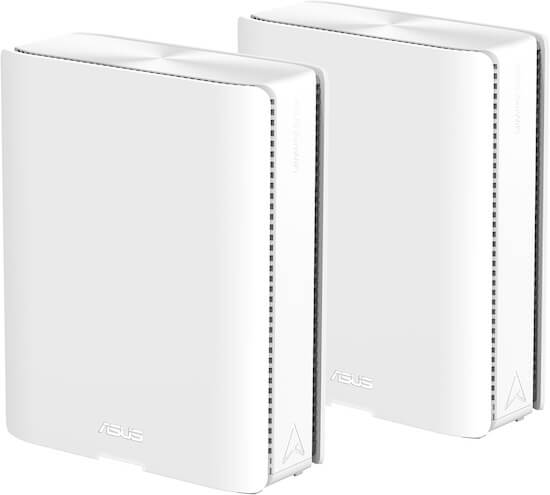
And yes, I caved at Best Buy. The guy upsold me on an Asus ZenWiFi BQ16 Pro Wi-Fi 7 Mesh system ($1,100) — not cheap, but at least it blankets the entire house and prevents my older Cuban neighbors from leeching bandwidth for 4K adult content marathons. Probably. I locked it down… mostly. Can’t do anything about their late-night hot tub sessions–shudder.
Mesh Wi-Fi is actually smart if your router lives behind drywall and denial in a corner of the living room. Mesh nodes spread the signal like gossip at a Vero Beach HOA meeting — fast, efficient, and everywhere at once.
In summary: Wi-Fi 7 is wild, but unless you’ve got fiber gigabit service (and a tech-savvy ex-president funding your upgrades), most of it’s theoretical flex. Still, if Washington keeps spiraling, I might never upgrade again. Just let Trump and Musk settle it with a biltong fight — winner gets the 6 GHz band, and the rest of us get peace and a working connection.
You’re Almost There… Final Thoughts from the Streaming Trenches
You’ve locked down a solid modem, router, and even shelled out for a decent switch if you insist on hardwiring 20 connected devices — bravo. You’re now standing on the edge of streaming glory, capable of blasting 4K Blade Runner 2049, DSD jazz sessions, and Fortnite deathmatches across your household without a single buffer circle.
But don’t pop the champagne yet. There are still a few finishing touches to keep this digital ship from sinking faster than a Century Village HOA meeting over pickleball noise.
Set Up QoS — or Netflix Will Cry While TikTok Wins
Your router probably has a QoS (Quality of Service) setting. Use it. Think of it as traffic control for your bandwidth — prioritizing what matters (Squid Game in 4K) and de-prioritizing what doesn’t (someone uploading a 400MB “life update” on Instagram). QoS tells your network, “Let the hi-res jazz play—Kevin’s YouTube Shorts can wait.”
Guest Network: Because Uncle Lou Doesn’t Need to See Your NAS
Create a guest network. Keep your gear safe from random phones, tablets, and that one cousin who still thinks 1234 is a secure password. It’s like putting out a veggie tray for visitors — they feel welcome, but you’re not sharing your steak.
Firmware Updates — Sexy as a Deli Platter, but Crucial
I get it — firmware updates sound about as thrilling as waiting in line at the deli while Mrs. Rothzweig asks for a kishke sample and quizzes the poor teenager on his brisket slicing technique — all while I’m just standing there hoping she’ll finally invite me for a round at that fancy golf club up the road. You know, the one I’m still not convinced lets Jews in unless they’re cardiologists or married to one.
And don’t get me wrong — Mrs. Rothzweig, with her golden hair and a smile that could melt a man’s heart faster than the mid-afternoon sun at the pool club, deserves that round. I’d just like to be on the guest list before Rosh Hashanah.
But updates matter. They fix bugs, close security holes, and keep your gear from turning into e-waste.
Just don’t blindly trust automatic updates. Ask anyone who owns a Samsung soundbar and woke up one day recently to find their $900 speaker had been reduced to a blinking brick of regret. Set reminders, read the release notes, and don’t be first in line unless you like living dangerously.
Bonus Tip: Unless you’re paying for the most expensive subscription tier from Netflix, Amazon, HBO and others, you won’t be getting pristine 4K video or immersive Dolby Atmos sound.
Built In, Blissed Out: How CI Speakers Went from Afterthought to Audiophile Upgrade (Even in Florida)
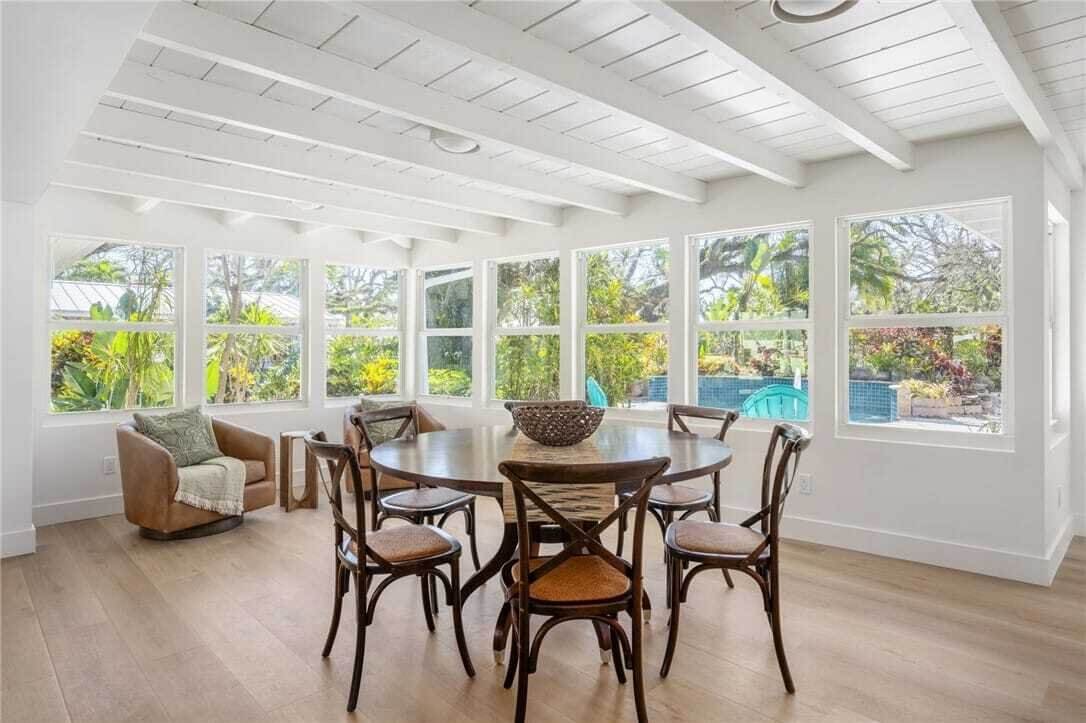
There was a time when CI (custom installation) speakers were the audio equivalent of an off-brand wine spritzer — acceptable at a party, but no one was writing sonnets about them. Tinny, underpowered, and usually shoved into drywall like an afterthought, they were something you installed when interior designers got more say than the guy actually paying for the system.
But here’s the twist — CI speakers have leveled up. Big time.
Brands like Focal, KEF, DALI, Origin Acoustics, and Theory Audio Design are now stuffing serious tech into walls and ceilings, and the results? Shockingly good. We’re talking clarity, imaging, and bass response that’ll make you question if you actually need those big floor standers anymore — especially if your Florida home is shaped like a shoebox with storm windows and open ceilings and your HOA thinks subwoofers are a form of domestic terrorism.
CI speakers used to be the audio equivalent of cruise ship buffet shrimp — now they’re more like a perfectly aged ribeye from a steakhouse that still doesn’t accept OpenTable because they don’t have to.
And for those of us who’ve embraced the cabin or ranch life, the clean install is a godsend. No speaker stands. No cables running across your shiplap. Just smooth, sexy sound built right into your space — and maybe, just maybe, enough of a flex to make someone raise an eyebrow next time she “accidentally” ends up on your back patio during golden hour.

And while CI speakers are finally getting their due indoors, let’s not forget what’s happening just beyond the sliding glass doors. Outdoor and marine speakers have evolved from squawk boxes you’d hide behind a planter to full-blown entertainment weapons.

These aren’t your uncle’s rusty patio speakers wheezing through a Jimmy Buffett playlist every summer. Brands like Focal, Theory Audio Design, Origin Acoustics, and Leon Speakers have taken a big step into the great outdoors — quite literally — with outdoor speakers, bollards, and subwoofers that don’t just survive the elements, they dare the weather to try them.
We’re talking gear designed to handle the bitter cold, snow, and salt spray of the Jersey Shore or Nova Scotia in February and the hot, wet, hurricane-prone sauna that is the Treasure Coast from June to October.

Whether you’re dealing with Nor’easters or sideways rain that feels personally offended by your backyard movie night, these systems deliver real audiophile performance — without falling apart, rusting over, or sounding like a Bluetooth speaker dropped in a pool.
The only thing they haven’t figured out? How to keep your neighbor from slinking over to “check the game” every time you fire up the outdoor zone — which is really just code for draining your cooler, farting up your Adirondack chair, and delivering a TED Talk on why the Dolphins’ third-round pick is a future Hall of Famer (he’s not). But once he leaves and the sun dips low, there’s nothing quite like crisp 4K under the stars, a hammock swaying in the breeze, and high-end sound washing over the yard like a warm tide.
And then there’s the Maritimes.

Out here, the only thing they haven’t cracked is how to keep your neighbor from showing up uninvited the second you fire up the outdoor zone — which in Nova Scotia usually means he’s come to filch your beer, park himself in your Muskoka chair, and wax poetic about how the Leafs are “due.” (They’re not. And no one here’s losing sleep over it — this is Crosby country, bud.)
Still, once he lumbers off and the gulls settle down, it’s something else. Crisp 4K under a canopy of stars, the Atlantic murmuring below, and the kind of hi-fi sound that carries clear across the bluff. It’s not the backyard setup I pictured — but then again, I didn’t picture trading noise and nonsense for ocean wind and a fire pit, either. Spring and summer here feel like the province apologizing for what it’s about to do to you from October through March. But when it’s good, it’s damn near holy.
More to come…
Related Reading:
- 20 Best Film Noir Movies To Watch Before You Die (Or Get Framed For Murder)
- DALI’s GARDIAN OW-6 Outdoor And Phantom In-Ceiling Speakers Can Brave The Elements: CEDIA 2024
- Theory Audio Design’s Sb25aw Surface Mount Loudspeakers Can Get Wet And Wild: CEDIA 2023
- Theory Audio’s Landscape Speaker Lineup Aims To Turn Your Outdoor Space Into A High-End Audio Oasis
- 20 Essential 4K Blu-Ray Test Discs For Home Theater Setup




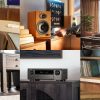


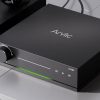
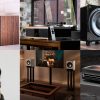
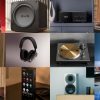








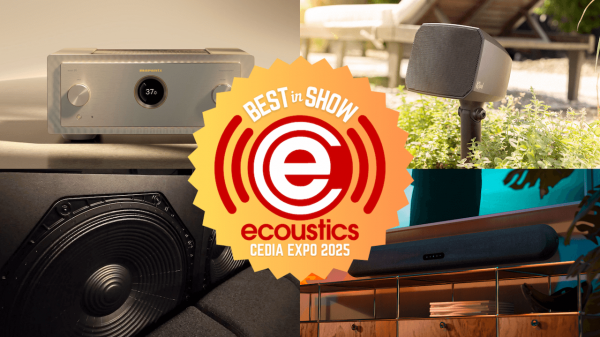



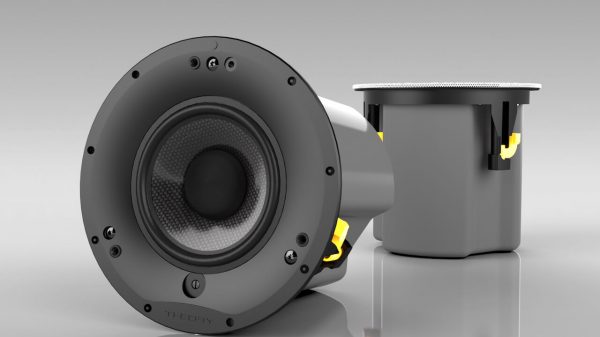
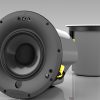


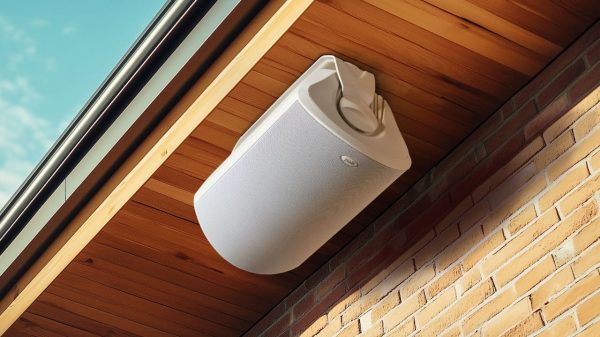


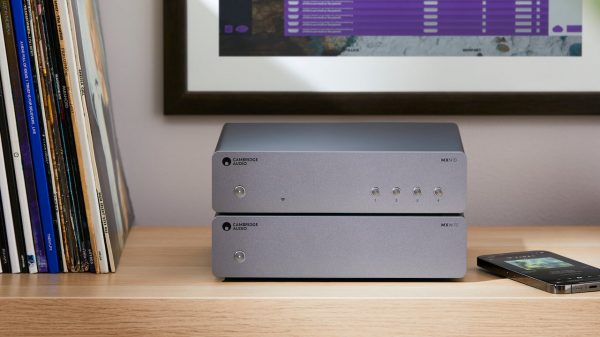

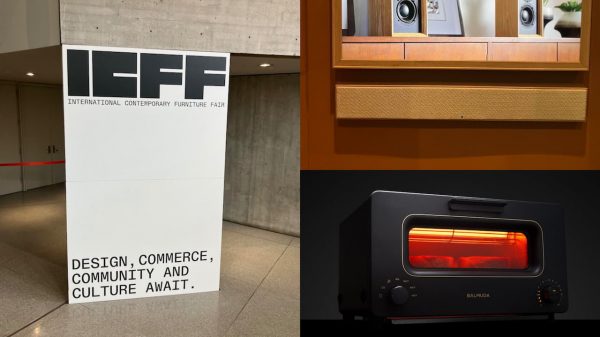












Asa
July 23, 2025 at 7:43 pm
Excellent write-up…as always, Ian.
Your network is only as fast as your slowest piece of the puzzle, and in my case, it’s more neighbors and network saturation.
We were the first ones who purchased in this neighborhood and had Wi-Fi rolling a few weeks later (Gig-speed cable). It was super speedy using separates (modem, mesh router system – v6), but once the ‘hood started filling up, speeds started going down. Lots of ‘work from homers’ here too and not a lot to do about it. Can still stream 4K/qobuz and do multiple zoom calls, so I’ll call it a win.
Yes, set up ‘guest network’, but don’t keep it enabled.
Our neighbors, in two different neighborhoods, had outdoor theaters. I didn’t mind it too much until we were headed to bed one evening (11:30pm), and it was still playing into the night. Double-pane windows in current home don’t block out much, but the thick glass, triple-panes we had prior were like an underground bunker that you could still see out of.
Best of luck with the neighbors. What are you doing about bugs/roaches, etc.? Any gator sightings?
Side note: Bluetooth…noticed a neighbor installed a ‘Samsung the frame’…I wonder if people have…nah.
Ian White
July 23, 2025 at 8:46 pm
Asa,
The neighbors in FL are definitely older and unlikely to stream hi-res audio or 4K video. They just like to fight, drink, and have “relations” in their questionable hot tub.
I have a covered open-air garage space that doubles as a space to exercise (have an outdoor fan), keep the car under a roof. I might convert one part of it into an extra home office/bedroom. The mesh system will work wonders out there.
The biggest issue was finding a good provider.
My fiber optic service in NJ took 15 years to materialize because of a monopoly. It’s very fast and stable.
No gators so far. The neighborhood is situated in-between the inter-coastal and ocean and there are some infrastructure issues. The bugs are huge. The ants bug me more than anything.
The cabin will be the hardest project because of location.
Stay tuned.
IW
Asa
July 24, 2025 at 2:43 pm
Can’t wait to hear more…and reminds me of some old neighbors who had ‘relations’ on their front porch with the wrong ‘person of interest’ and the other ‘person of more interest’ showed up which ended up turning into a drunken yelling match at midnight.
Cops were called, two of them in cuffs until they all calmed down and officers could get the straight scoop. In the end, all parties scattered never to be seen again. Good times!
As a new resident of FL, you may have seen this channel, but it’s always entertaining…and amazing to see what type of money is spent on some of these luxury liners, and just plain “L.I.E.” (thanks ORT).
https://www.youtube.com/@WavyBoats/videos
ORT
July 26, 2025 at 5:14 pm
I have had a Mesh (Mensch?) WiFi setup for a few years now. It’s great. I have had HEOS for about 9 years now. It too is great. I can even play CDs via HEOS and yes, even vinyl which I only did once as it doesn’t sound good at all.
Mesh WiFi also keeps my robot vacuums happy as they go from room to room.
The ORTacle at HelFi